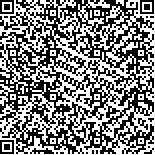| 摘要: |
| 为探究珠江口海域自养微微型浮游生物种群时空分布特征及其与环境之间的关系, 于2013年5~11月, 运用高液相色谱(HPLC)法和流式细胞术对珠江口海域表层水体中微微型浮游生物进行测定。流式细胞计数结果显示, 珠江口海域自养微微型浮游生物由聚球藻(Synechococcus, Syn)和微微型真核生物(Picoeukaryotes, PEUK)组成。聚球藻始终占据总细胞丰度的主导地位。光合色素化学分类法(Chemotaxonomy, CHEMTAX)分析表明, 自养微微型浮游生物群落结构具有明显的季节性变化, 春季和夏季生物量以聚球藻为主, 秋季生物量以青绿藻为主。CHEMTAX分析和流式细胞计数结果的相关性分析表明, 在春季和夏季Syn细胞丰度与CHEMTAX生物量(即Syn贡献chl a)之间呈现极显著正相关(P<0.01), PEUK细胞丰度与CHEMTAX生物量(即PEUK贡献chl a)也存在显著正相关(P<0.05); 然而, 在秋季则无显著性相关关系(P>0.05)。冗余分析表明, 温度和营养盐浓度是影响自养微微型浮游生物群落分布与组成的重要因素。另外, 盐度、透明度、悬浮颗粒物对自养微微型浮游生物具有一定影响。 |
| 关键词: 珠江口 自养微微型浮游植物 流式细胞术 光合色素化学分类法 光合色素 |
| DOI:10.11693/hyhz20220900242 |
| 分类号: |
| 基金项目:国家自然科学基金项目,42176206号;山东省自然科学基金项目,ZR2021MD071号;江苏海洋大学“测绘科学与技术”重点学科 |
附件 |
|
| TEMPORAL AND SPATIAL DISTRIBUTION OF AUTOTROPHIC PICOPLANKTON IN THE ZHUJIANG RIVER ESTUARY BASED ON HPLC PIGMENT METHOD AND FLOW CYTOMETRY |
|
LI Xiang-Yang1, WANG Ya-Zhou1, ZHANG Hui-Hui2, WANG Nan2, LI Yu1, JIANG Tao2
|
|
1.School of Marine Technology and Geomatics, Jiangsu Ocean University, Lianyungang 222005, China;2.School of Marine, Yantai University, Yantai 264005, China
|
| Abstract: |
| To explore temporal and spatial distribution of marine autotrophic picoplankton in the Zhujiang (Pearl) River estuary and its relationship with the environmental factors, HPLC pigment method and flow cytometry were used to measure picoplankton in the surface water in three cruises during May-November, 2013. Results of flow cytometry showed that autotrophic picoplankton was mainly composed of Synechococcus and picoeukaryotes. Synechococcus dominated in the total cell abundance in all the cruises. Chemotaxonomy analysis (CHEMTAX) showed that the structure of autotrophic picoplankton community had obvious seasonal changes. Synechococcus dominated the total picoplankton biomass in spring and summer, while prasinophytes did in autumn. Significant correlation was found between CHEMTAX-calculated Synechococcus-chl a and cell abundance of Synechococcus by flow cytometry during spring (May) and summer (August) (P<0.01), while was not observed during autumn (November) (P>0.05). Similar results were also found for picoeukaryotes. Redundancy analysis showed that temperature and nutrient concentration were important factors affecting the distribution and composition of autotrophic picoplankton community. In addition, salinity, Secchi depth and suspended particulate matter had certain effects on the distribution of autotrophic picoplankton. |
| Key words: Zhujiang (Pearl) River estuary autotrophic picoplankton flow cytometry Chemotaxonomy photosynthetic pigment |
